Design Specifications for Tire Stacking Racks
The design specifications for tire stacking racks cover dimensions, materials, structure, safety, and other aspects, mainly including the following aspects:
1、 Dimensional specifications
Length: The length of the tire stacking rack is usually determined by the number of tires placed, and the length needs to be able to accommodate enough tires. In general, the length of tire racks is about 3-4 meters.
Width: The width of the tire stacking rack needs to be able to accommodate one to two rows of tires. Generally, the width of the tire rack is about 1.2-1.5 meters.
Height: The height of the tire stacking rack needs to be determined according to the height of the warehouse or store. The height of the tire rack is generally around 2.4 to 3 meters, and some customized ones may need to reach around 5 meters. However, it should be noted that a height that is too high is not conducive to the placement and removal of tires.
Layers: The number of layers in the tire stacking rack needs to be determined according to the height of the warehouse or store space, and adjusted according to demand. Generally, the number of layers for tire racks is around 2-5. But if the number of layers in the tire rack is too high, it will affect the placement and removal of tires.
2、 Material specifications
Load bearing capacity: The load bearing capacity of the tire stacking rack needs to take into account the weight of the tires, and sufficient inquiries and understanding need to be conducted before design to ensure that the load bearing capacity meets the requirements.
Material selection: The material of the tire stacking rack needs to consider the weight and service life of the tires. Generally, it is recommended to use steel, which can be used to fasten the angle iron off the ground and reinforce the support columns and partitions. At the same time, the material should have high strength, corrosion resistance, anti slip and wear-resistant characteristics to ensure the stability and durability of the shelf.
3、 Structural specifications
Stability: The structural design of the tire stacking rack should be reasonable to ensure the stability of the shelf and prevent collapse or tilting. The bottom of the shelf should be designed with foot cups or stacking covers to provide ground support, making it more stable when stacked in units or multiple units.
Guardrail design: In order to prevent tires from falling off, the tire stacking rack should be designed with three side guardrails to provide certain protection for the loaded tires.
Forklift aisle: The bottom of the tire stacking rack should be designed with multiple forklift sleeves, making it compatible with multiple forklifts, easy to operate, saving manpower and material resources, and effectively reducing logistics costs.
Traction device: The bottom of the tire stacking rack can be equipped with a rear traction device, which can not only provide traction for the automotive parts turnover vehicle under various driving conditions, but also make the turnover racks interlocked with each other, making it easy to store and form a linear logistics during turnover.
Caster configuration: The bottom of the tire stacking rack can be equipped with casters (2 fixed, 2 universal with brakes), which are easy to operate manually, convenient and fast, time-saving and labor-saving, and multifunctional, highlighting the maneuverability and flexibility of its turnover rack.
4、 Safety regulations
Dustproof and moisture-proof: The tire stacking rack should have dust-proof and moisture-proof functions to prevent the tires from being affected by dust and moisture.
Seismic function: Shelves should have seismic function to prevent tire damage or shelf collapse during natural disasters such as earthquakes.
Safety signs: Clear safety signs and warning signs should be set up on the tire stacking rack to remind operators to pay attention to safety.
Regular inspection: Regularly inspect the surface of the shelves for rust, damage, deformation, and other conditions to ensure the integrity and safety of the shelves.
5、 Other specifications
Environmental friendliness: The selection of materials for tire stacking racks should consider environmental friendliness and minimize their impact on the environment.
Cleanliness: The design of shelves should be easy to clean, avoiding excessive dust that could affect the quality of goods or the clarity of signage.
Customized service: Based on the actual needs of customers, we provide customized tire stacking rack design services to meet the storage needs of tires of different specifications and quantities.
In summary, when designing and manufacturing tire stacking racks, these specifications should be strictly followed to ensure the safety, stability, and durability of the racks.
Qingdao Feiyuan Storage Equipment Co., ltd. is a manufacturer of storage and logistics facilities that integrates research and development, production, and sales. For more information about tire stacking rack, please contact us.
Address:Lime KiIn Industrial Zone, Wangtai Town, Huangdao District,Qingdao, China.
Email:admin@fyracks.com
Hot keywords:
tire stacking rack
Specific Types and Application Scenarios of Stacking stillages
Stacking stillages are a type of shelving system that achieves efficient storage of goods through vertical stacking. Their core advantages lie in saving space, increasing storage density, and maintaining convenient access to goods.
What are the Key Considerations When Purchasing Tire Storage Rack for Garage?
Tire storage rack for garage are tire storage devices specifically designed for garages, aiming to achieve neat storage, convenient management, and safe protection of tires.
What are the Core Advantages of Rack Steel Pallet Rack?
Rack steel pallet rack is a high-strength storage system made primarily of steel, assembled through steel welding or interlocking. It features high load-bearing capacity, structural stability, and durability.
What are the Design Features of Tire Storage Rack on Wheels?
Tire storage rack on wheels are devices specifically designed for tire storage and turnover.



